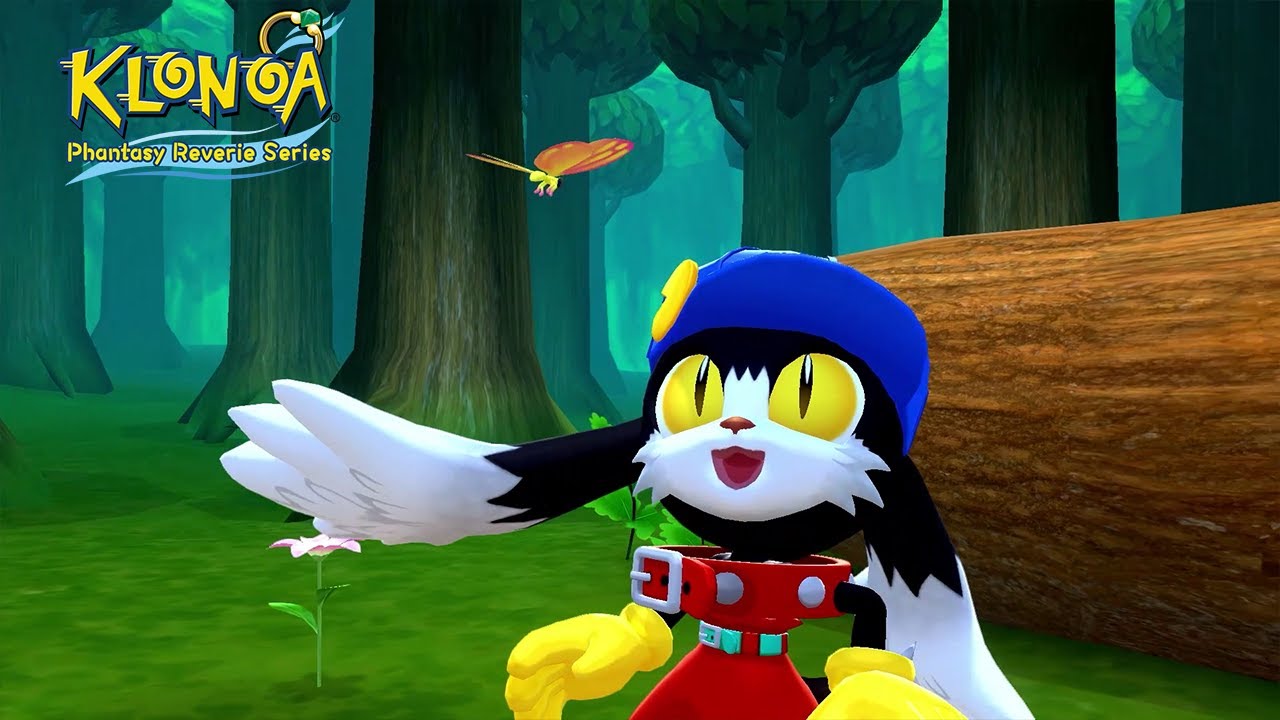KLONOA Phantasy Reverie Series (Klonoa Door To Phantomile)
Time To Enter Phantomile Once Again
A little over a month ago, I checked out the demo for the Klonoa Phantasy Reverie Series and it passed with flying colors. A fan-favorite and a cult classic, Klonoa Door to Phantomile and Klonoa 2 would receive praise and inspiration for decades to come following their releases. Unfortunately, our anthropomorphic friend has seen better days, often existing outside the limelight of other Bandai Namco titles. The last time we've seen Klonoa was during the 2008 Wii Remake. There were talks of an anime marking the beginning of its revival, but it was revealed later that the development was canceled.
As the Phantasy Reverie Series features both Klonoa games in their entirety, I'd love to give both games justice by covering each title as a separate entity. This means that this review is all about Klonoa Door To Phantomile as featured in the collection. I'll cover Klonoa 2 Lunatea's Veil as I play through it in the near future. While the original Door to Phantomile was released on the PlayStation, the version featured here is based on the Wii version. In 2008, Klonoa was remade as a Nintendo Wii-exclusive, shifting from 2D sprites to 3D polygons.
Essentially, this version is the same version as the Wii but remastered and made familiar to the original's release. The optional English voice acting, aside from the made-up language in the series, was removed. Several graphics and game modes were touched up and removed, making it close to how the original was envisioned. The voice clips in their in-universe language were taken from the Wii version. This makes this version ironic as an exclusive, which I personally felt should have never been an exclusive, is now available across all platforms as it should have been.

The story begins with Klonoa and Huepow seeing a ship crash into a tower near their home of Breezegale. Determined to inspect the crash, the duo makes their way to the top of the tower to find the two main antagonists, Ghadius and Joka looking for the Moon Pendant. After the first boss, Klonoa and Huepow discovers the Moon Pendant and visits the elder known affectionately as "Grandpa" for more information. The girl who crashed into the tower, Lepishe was kidnapped by Ghadius in hopes of luring the location of the pendant. He wasn't above reversing the flow of water to doom a withering village to get his way either.
Klonoa Door to Phantomile is separated into six chapters known as Visions. Each "Vision" has two levels each, with a level boss awaiting Klonoa at the end of the second level. The exception is the Final Vision, which is the game's "Final Boss." Each "Vision" doesn't necessarily mean a "New World" as some locations are "reused" in later Visions. An early example is the first level of Vision 2 where Klonoa goes through Forlock, a withering forest. The entirety of Vision 3 has Klonoa return to Forlock within its restored forests and a spiraling house where Granny resides.

Throughout the game, Klonoa's gameplay never changes as he is armed with a magical ring that shoots Wind Bullets. When the bullets touch an enemy, they are sucked toward's Klonoa's ring, which he can then throw the enemy into items or use the enemy as a double jump. What changes across Door to Phantomile is how a simple mechanic is used with different enemies and scenarios. In the beginning, the deceptively simple gaps and puzzles become more complex as the game goes on.
There are many examples where the game pushes the player to its limits but easily one of the biggest examples is the cusp of Vision 4. Klonoa and Huepow have failed to defend the Moon Pendant against Ghadius and Joka, chasing them to the skies of the Sun Kingdom, Coronia. A huge part of what makes Door to Phantomile an amazing game is its level design. Up until this point, most of the levels were simply "Point A to Point B," yet Vision 3-2 hinted at levels that require backtracking. There are areas closed off that Klonoa can only enter with a key, which means going off the beaten path to obtain them only to return, open the locked doors, and repeat the process.
Vision 5-1 begins with the duo stopped by the residents of Coronia, saying that in order to continue through the locked door they must find four orbs. The level ends where it begins and the rest of the level includes two main paths that lead into two split paths, respectively referencing the four orbs. Up until this point, the player has been freeing the residents of each location trapped in bubbles. This "non-linear linear" level design doesn't break away from the "freeing prisoners" sub-goal of Klonoa. Instead, everything in this level flows to where it's impossible to get lost.

That's because there are certain parts of the level that are barred from progression unless players find the key, destroy the crystal, or find the orb barring its path. On the plus side, these "circular" levels are great as it gives players multiple chances to reclaim whatever collectibles are missed. However, if the player does this they are at risk of getting lost as each level is met with the expectation of moving forward.
No matter what, Klonoa must move forward despite the tragedies that come across within the game's story. The levels reflect this not just in design, but also in its music. The levels in the latter half of the game feature notes from previous levels yet in a more heroic, dire, and emotional tone. The final levels include interpolation from the game's main theme, a trope I wish more modern games did.
These levels also include unique one-off gimmicks that aim to shake things up. In 5-2, the time of day shifts from "sunset" to "nighttime." At night, enemies are invulnerable and are of a different variant than the usual enemies. The interconnection between puzzles and platforming is blurred as one vision requires the player to use their brain as well as their reflexes.

Klonoa is not the most difficult platformer I've played, but it's far from easy. After a while it lets go of your hand and plunges you into the abyss, lulling you in a false sense of security with its cheery graphics and cute enemies. The pacing of the story matches the pacing of the levels, filling the player with hope as they fight through areas where everyone is trying to kill. If this was your first time playing Klonoa, certain puzzles and boss fights will take a few tries to understand.
This is where the difficulty of the game comes in. The "easy" difficulty doesn't make the game easier but offers a cushion when you fall. The player has double the life, double the defense, infinite lives, and most importantly the wind bullet actually works. One of the most frustrating negatives I can give the Door to Phantomile remaster is the inconsistency of Klonoa's wind bullet.

There are times when I'm directly next to the opponent and they refuse to get caught in my bullet. This led to unnecessary deaths where the hitbox of the enemy collided with Klonoa before the bullet can. On "easy" difficulty, the bullet travels farther to where if I shoot it, I'm certain it'll hit. Honestly, if the wind bullet acted the same in Normal mode as it did in Easy mode, it would have been a far better improvement.
The platforming in Klonoa Door to Phantomile is tricky as well, including slippery movements that will make you go "I landed on this tiny piece of rock!" only for the game to say "Nope, fall to your death!" I had to use "Easy Mode" for the penultimate level and I'm not ashamed to admit it. It felt like my situation with Crash 4 all over again. Compared to Ghadius, the Final Vision and the final boss is incredibly lackluster. I'd say Ghadius was the hardest boss in the game due to its mechanics and being placed in a claustrophobic space. The final boss fight felt similar to the first handful of bosses with each phase being a "checkpoint."
Oh, if you lose all of your lives in a Vision, you have to start from the beginning. This includes dying at the boss, losing all of your lives figuring out the mechanics, and having to redo all of the difficult sections of the level again. Suddenly, Easy mode didn't sound so bad. The "Hard" mode you unlock by beating the game is essentially a "no-damage" run as "one touch = one death." There is one more Vision after you save Phantomile and endure the rather heartbreaking ending Door to Phantomile has to offer.

At each level, there are six residents to save for a total of 72 residents. Saving all 74 residents of Phantomile and clearing the game unlocks a bonus Extra Vision. Due to the nature of the game's ending, it's assumed that this Vision takes place after the final boss but before the game's ending. Balue, the man constructing the tower in honor of Lepishe at the beginning of the game, is successful in its construction. Lepishe herself is currently on top of the tower, witnessing it for herself. Balue warns Klonoa not to ascend the tower as he makes his way to see Lepishe. With both Klonoa and Huepow knowing that Balue would cause more trouble than its worth, Klonoa decides to scale the tower to see Lepishe and make sure she's okay.
The first thing players will note is a timer, unique to this level only. At the end of the level, players can compare times with each other as bragging rights and by the end of the level, I can see why. I mean this with zero exaggeration when I say that this is the hardest level in the game. Imagine a common Mario romhack and how elements of the game are pushed to their absolute limit, far beyond a "casual" playthrough. This is the Extra Vision. Each tower is separated by floors, offering the player several challenges of varying difficulty as Klonoa climbs to the top.

One trick Klonoa Door to Phantomile teaches you early on is that when there are several Flying Moos (the green birds) stacked on top of each other, they can be chain jumped to reach higher levels not normally possible. This returns and is needed for several levels and trapped prisoners. In the Extra Vision, mastery of this is required as Klonoa will have to travel over death pits with nothing more than well-timed enemy jumps. One section even requires Klonoa to slingshot to the other side and avoid the death pit to a moving platform. The final section of the level ties everything together, making this an intense finale to a game that started off deceptively simple.
Your reward for clearing this gauntlet is the Music Player, allowing players to listen to the music in-game. Clearing the game also unlocks a movie viewer which is also self-explanatory. By the time I cleared the Extra Vision, it took me a total of about four hours which I would say is the average for Door to Phantomile.

Klonoa Door to Phantomile is a beautiful timeless platforming classic that hides some very deceptively difficult gameplay underneath its exterior. It's a challenging, fun, and surprisingly heartwarming tale that segues into Klonoa's fate in Klonoa 2. As mentioned, I'll cover the second game in a separate post and give it the same love as I have given the first game at a later date.

